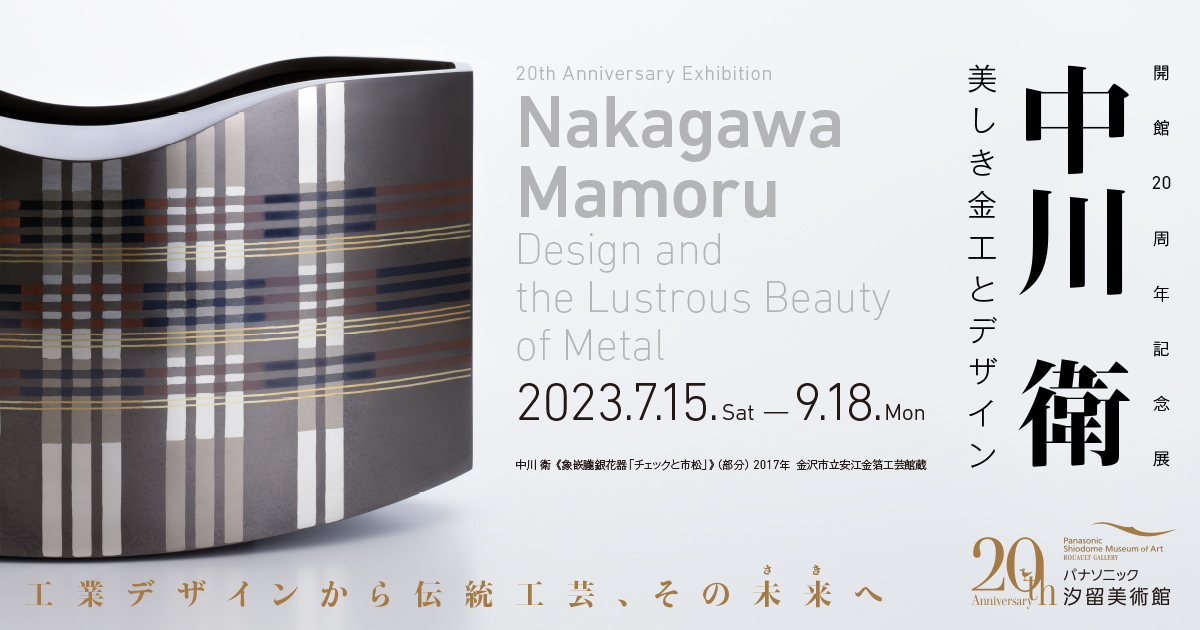20th Anniversary ExhibitionNakagawa Mamoru: Design and the Lustrous Beauty of MetalClosed

No reservation is required for the “Nakagawa Mamoru: Design and the Lustrous Beauty of Metal” exhibition.On busy days, you may be given an entry ticket for a specific time slot (one time slot every 15 minutes).
Exhibition overview
Nakagawa Mamoru (b.1947) is a former Panasonic designer and a metal artist based in Kanazawa, Ishikawa Prefecture. In 2004, he was recognized as a Living National Treasure for his mastery in metalworking. Through some 130 artworks and documents, this exhibition traces Nakagawa’s explorations of inlaying techniques from early in his career up to the present day. Displays include Nakagawa’s early work as a product designer; masterpieces of Kaga-style metal inlay, which were his introduction to the world of metalworking; and works by young artists influenced by him. Visitors will recognize the living and breathing spirit of design in his creations and learn about his extensive efforts to pass on traditional techniques.
- Dates
- July 15 Saturday - September 18 Monday, 2023
- Hours
- 10 a.m. - 6 p.m. (Open until 8 p.m. on August 4, September 1, September 15, and September 16.)
Admittance until 30 minutes before closing time.
- Closed
- Wednesdays (Except for September 13) and during August 13-17
- Admission
- Adults: ¥1,200
Visitors aged 65 or over with valid documentation: ¥1,100
Students (High school and college): ¥700
Admission is free for children in middle school or younger. Admission is free for disability passbook holders and up to one accompanying adult. Click here to access the discount voucher page.
- Organizers
- Panasonic Shiodome Museum of Art, Asahi Shimbun
- Supporter
- Japan Kōgei Association, Minato City Board of Education
- Special cooperation
- Pola Foundation of Japanese Culture, The Soukeikai Foundation





